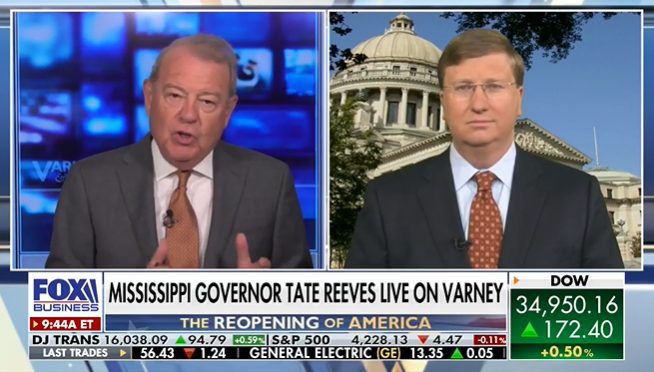
The NFIB Small Business Optimism Index rose to 99.8 in April, an increase of 1.6 points from March. The Optimism Index has increased 4.8 points over the past three months since January but a record 44% of owners reported job openings they could not be filled.
“Small business owners are seeing a growth in sales but are stunted by not having enough workers,” said NFIB Chief Economist Bill Dunkelberg. “Finding qualified employees remains the biggest challenge for small businesses and is slowing economic growth. Owners are raising compensation, offering bonuses and benefits to attract the right employees.”
State-specific data is unavailable, but NFIB State Director Dawn Starns McVea said, “Mississippi’s is getting strong, but small business owners say there are still more job postings than job applicants. Our members applaud Governor Reeves for making the difficult decision to end federal COVID-19-related unemployment benefits in the hope of encouraging more Mississippians to return to the workforce.”
Key findings include:
- Eight of the 10 Index components improved and two declined.
- The NFIB Uncertainty Index decreased one point to 80.
- Earnings trends over the past three months improved eight points to a net negative 7%.
- Owners have plans to invest in their businesses as the percentage of those planning to make capital expenditures in the next three to six months increased seven points to 27%.
- The percent of owners expecting better business conditions over the next six months fell seven points to a net negative 15%, surprisingly glum.
Forty-seven percent reported capital outlays in the last six months, down two points from March but 10 points above last year’s low. Of those making expenditures, 42% reported spending on new equipment, 25% acquired new vehicles, and 15% improved or expanded facilities. Six percent acquired new buildings or land for expansion and 12% spent money for new fixtures and furniture. Twenty-seven percent plan capital outlays in the next few months. Hopefully supportive of improved productivity.
A net 3% of all owners (seasonally adjusted) reported higher nominal sales in the past three months, up nine points from March. The net percent of owners expecting higher real sales volumes improved one point to a net 1%.
The net percent of owners reporting inventory increases rose three points to a net 3%. A net 7% of owners view current inventory stocks as “too low” in April, up four points. A net 5% of owners plan inventory investment in the coming months, up one point from March.
The net percent of owners raising average selling prices increased 10 points to a net 36% (seasonally adjusted), the highest reading since April 1981 when it was 43%. The highest was 67% in October 1974 when inflation reached double-digit rates. Price hikes were the most frequent in wholesale (62% higher, 3% lower) and retail (46% higher, 6% lower). Seasonally adjusted, a net 36% plan price hikes, the highest reading since July 2008.
A net 31% (seasonally adjusted) reported raising compensation. A net 20% plan to raise compensation in the next three months. Increased compensation is being passed on to customers through higher prices.
Eight percent cited labor costs as their top business problem and 24% said that labor quality was their top business problem, unchanged from March and the top overall concern.
The frequency of positive profit trends improved eight points to a net negative 7% reporting quarter on quarter profit improvement. Among owners reporting lower profits, 39% blamed weaker sales, 16% cited the usual seasonal change, 14% cited a higher cost of materials, 7% cited lower prices, 6% cited labor costs, and 4% cited higher taxes or regulatory costs. For those reporting higher profits, 62% credited sales volumes, 15% cited usual seasonal change, and 10% cited higher prices.
Two percent of owners reported that all of their borrowing needs were not satisfied, 26% reported all credit needs met, and 59% said they were not interested in a loan. A net 3% reported their last loan was harder to get than in previous attempts. One percent of owners reported that financing was their top business problem.
Click here to view the full report.
Press Release
5/11/2021









